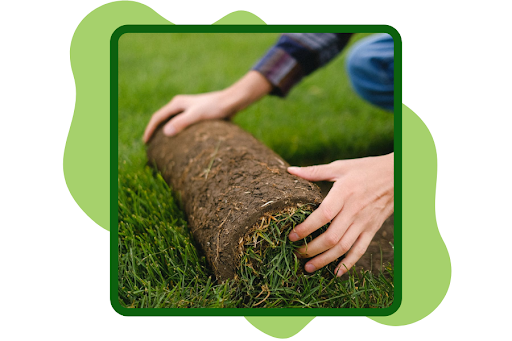Learn the do’s and don’ts of sod with Bigfoot Turf and see how we can help.

Intuitively, laying sod over existing grass seems like an easy fix to a dying lawn: roll out new turf over struggling grass, let the bottom layer die and a new, beautiful lawn is right before your eyes. While this strategy sounds simple and efficient, is it really the best route to go?
While it seems like a great idea in theory, layering sod on top of existing turf isn’t likely to fare well. We can see why you’d think it could be a good strategy – it’s a quick fix for a dying lawn. However, like laying landscaping fabric, sod could starve existing grass for sunlight and effectively kill off the original layer.
Get to know the basics of turf with us, starting with our number one rule: laying sod over existing grass is a recipe for ruining your lawn. This is due to a variety of reasons, such as:
Roots Will Not Be Able to Establish
Turf needs to be able to grow roots quickly to become established after sod is laid. To do so, it needs additional soil. The original layer of grass will form a barrier that makes it difficult for roots to establish.

If you’re looking to add additional soil before laying sod to ensure root establishment, find out which type is best for your lawn.
Roots Will Dry Out

It is very difficult to lay sod in a manner that will prevent its roots from drying out. Because of the air trapped in the original grass, roots will be exposed to air and, regardless of how diligently you water them, will dehydrate.
The Soil Won’t Be Properly Prepared
If you’re in the market to lay new turf over a struggling lawn or playing field, you’ll need to prepare the ground first in order to allow the sod to make root-to-soil contact. Here are some ideas to consider to prepare your soil:
- Add a layer of topsoil on top of existing grass to ensure root contact.
- Remove old sod with a sod cutter to expose soil. This is optimal as there is a better connection for the roots and less chance of dehydration.
Click here to read more about our tips to prepare your soil for sod.
How We Can Help
So, how do you lay sod over existing grass? Unless the underlying turf that you are planning to put sod over is very sparse, it is best to go with another strategy, such as better preparing your soil for connection or professional installation.
Still want a quick and easy fix for your lawn? Apply for our sod installation service for fast, dependable, and hassle-free service so we can help ensure you get the lawn you want.
Related Questions on Sod
Don’t know what to do with your leftover sod?
Many garden centers accept sod cuttings for their mulching project, so call around if you’re concerned about diverting large amounts of yard waste from the waste stream when you re-sod your lawn. Click here for the complete list of places that recycle yard waste in Colorado.
When installing sod, how do you go about the watering aspect?
As with any other turf-laying project, you’ll need to consider grading and drainage when you install your new sod, making sure water doesn’t pool in low spots and drains properly. Check out this article from Colorado State University for how to set up your lawn for sod in terms of watering systems, along with some of our tips for watering your lawn once it is set up.
Have other questions?

